
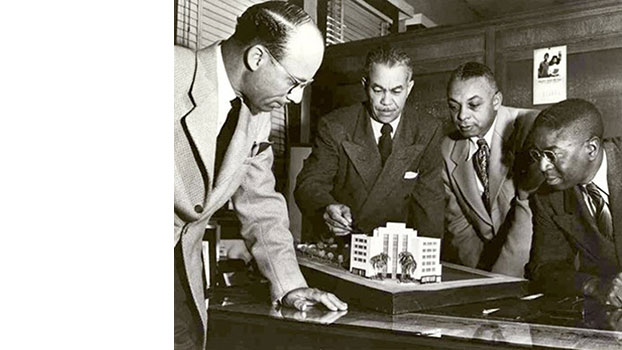
Paul R. Williams Building Wins Prestigious National Award
Ground-breaking Los Angeles architect Paul Revere Williams, FAIA, (1894-1980) was the first African-American member of the American Institute of Architects (AIA), and in 1957 became the first African-American architect elevated to fellowship in the AIA. Renowned for his elegant and sophisticated designs, Williams continually met and exceeded the best of his profession throughout a long and prolific career.
Historic Resources Group has had the honor to be the historic preservation consultant for a number of projects involving Paul R. Williams-designed buildings, including the rehabilitation and adaptive reuse of the 28th Street YMCA; the rehabilitation of the Angelus Funeral Home utilizing federal rehabilitation tax credits; repairs to important character-defining features of the LAX Theme Building (with Pereira & Luckman); and the nomination of the Hunt Residence as a City of Los Angeles Historic-Cultural Monument.
More recently, HRG worked on the rehabilitation of Paul R. Williams’ Golden State Mutual Life Insurance Building, which has been recognized with an Award of Excellence as part of the 2016 DOCOMOMO Modernism in America Awards. As one of only four awards nationwide in the category, this distinction befits Paul R. Williams’ exemplary body of work. The rehabilitation of this significant building is another important example of continued community benefits through historic preservation.
Image: Golden State Mutual Life Insurance Building. Photo credit: Paul Turang.
Historic Image: Architect Paul R. Williams, left of center, shows the model for the building to Golden State Mutual’s Corporate Secretary, Edgar J. Johnson, and co-founders Norman O. Houston and George A. Beavers, Jr. Photo credit: UCLA Library Special Collections.
HRG Projects Win Five 2016 California Preservation Foundation Design Awards
We are pleased to announce that the California Preservation Foundation has recognized five HRG projects for 2016 Preservation Design Awards. HRG worked closely with the project architects and clients to oversee the rehabilitation and adaptive reuse of each of these important resources.
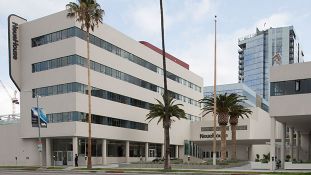 CBS Columbia Square opened in 1937 as the West Coast headquarters of Columbia Broadcasting. The complex’s striking International Style design symbolized the technical innovation and modernity of the broadcast industry during radio’s golden age. The recent rehabilitation removed a series of inappropriate alterations and returned the only West Coast design of pioneering modernist architect William Lescaze to its original state, while making a major contribution to the ongoing revitalization of Sunset Boulevard in Hollywood.
CBS Columbia Square opened in 1937 as the West Coast headquarters of Columbia Broadcasting. The complex’s striking International Style design symbolized the technical innovation and modernity of the broadcast industry during radio’s golden age. The recent rehabilitation removed a series of inappropriate alterations and returned the only West Coast design of pioneering modernist architect William Lescaze to its original state, while making a major contribution to the ongoing revitalization of Sunset Boulevard in Hollywood.
Image: CBS Columbia Square, the iconic former West Coast headquarters of the Columbia Broadcasting System. Photo credit: Kilroy Realty.
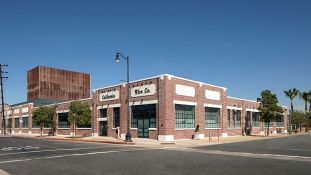 The Digital Media Arts Center on the Chapman University campus, formerly the California Wire & Cable Company building, has been adapted to serve the needs of the university’s film school. The result is a tangible memory of the City of Orange’s industrial heritage in a district that is being reimagined for new academic and community uses.
The Digital Media Arts Center on the Chapman University campus, formerly the California Wire & Cable Company building, has been adapted to serve the needs of the university’s film school. The result is a tangible memory of the City of Orange’s industrial heritage in a district that is being reimagined for new academic and community uses.
Image: Chapman University’s Digital Media Arts Center. Photo credit: AC Martin.
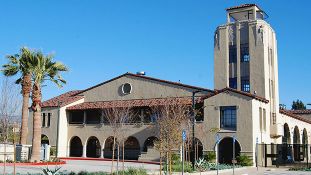 Grand Central Air Terminal, in Glendale, was Los Angeles’ official commercial air terminal when it was completed in 1929. Designed by Henry Gogerty in the Spanish Colonial Revival style with Zig-Zag Moderne influences, this dramatic building was a center of early aviation development in Southern California and served as the western terminus of the first regular transcontinental passenger service. This meticulous rehabilitation has adapted the building for new use as a corporate event space and offices.
Grand Central Air Terminal, in Glendale, was Los Angeles’ official commercial air terminal when it was completed in 1929. Designed by Henry Gogerty in the Spanish Colonial Revival style with Zig-Zag Moderne influences, this dramatic building was a center of early aviation development in Southern California and served as the western terminus of the first regular transcontinental passenger service. This meticulous rehabilitation has adapted the building for new use as a corporate event space and offices.
Image: Grand Central Air Terminal. Photo credit: Historic Resources Group.
 A rare remaining Shotgun House has been reborn as the Santa Monica Conservancy’s Preservation Resource Center. Owned by the City of Santa Monica and funded and operated by the Santa Monica Conservancy, this modest wood-frame building is believed to be one of the last intact shotgun houses in Santa Monica. So named to reflect the “shotgun” linear arrangement of connecting rooms that characterize the building type, shotgun houses were once ubiquitous in Santa Monica, and representative of the city’s early development as a beach-side resort. Rescued from impending demolition and relocated twice, the preservation of this valuable resource has been a long-term labor of love for the community. The Shotgun House will wander no more, having found a permanent foundation very near its original site.
A rare remaining Shotgun House has been reborn as the Santa Monica Conservancy’s Preservation Resource Center. Owned by the City of Santa Monica and funded and operated by the Santa Monica Conservancy, this modest wood-frame building is believed to be one of the last intact shotgun houses in Santa Monica. So named to reflect the “shotgun” linear arrangement of connecting rooms that characterize the building type, shotgun houses were once ubiquitous in Santa Monica, and representative of the city’s early development as a beach-side resort. Rescued from impending demolition and relocated twice, the preservation of this valuable resource has been a long-term labor of love for the community. The Shotgun House will wander no more, having found a permanent foundation very near its original site.
Image: The Santa Monica Conservancy’s Preservation Resource Center. Photo credit: Stephen Schafer, www.habsphoto.com.
 The Golden State Mutual Life Insurance Building was designed by pioneering African-American architect Paul R. Williams, FAIA, in 1949 as the headquarters for the largest African-American-owned insurance company in the western United States. For much of the 20th century, Golden State Mutual was a pillar of the African-American community in Los Angeles. Successfully rehabilitated, the Golden State Mutual Life Insurance Building now houses the South Central Los Angeles Regional Center, providing much-needed services for the developmentally disabled and their families.
The Golden State Mutual Life Insurance Building was designed by pioneering African-American architect Paul R. Williams, FAIA, in 1949 as the headquarters for the largest African-American-owned insurance company in the western United States. For much of the 20th century, Golden State Mutual was a pillar of the African-American community in Los Angeles. Successfully rehabilitated, the Golden State Mutual Life Insurance Building now houses the South Central Los Angeles Regional Center, providing much-needed services for the developmentally disabled and their families.
Image: Close-up of restored fenestration, which had been covered for most of the last 60 years. Photo credit: Paul Turang.
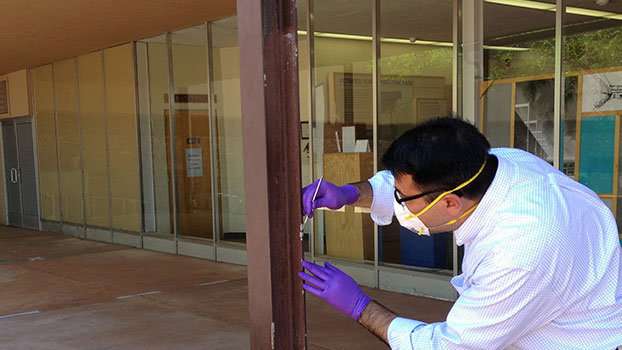
Looking Great at 100! Happy Birthday, National Park Service
The National Park Service (NPS) marked its centennial in August, celebrating 100 years of managing some of America’s most important and inspirational sites and providing recreation, conservation, and historic preservation services to the nation. Created by Congress on August 25, 1916, the NPS manages over 400 properties as diverse as Yellowstone National Park, Alcatraz Island, and the Tuskegee Institute, with over 20,000 employees serving more than 275 million visitors each year.
The NPS manages the National Parks, but did you know that they are also tasked with administering National Historical Parks, National Historic Sites, National Memorials, National Monuments, National Preserves, National Recreation Areas, National Seashores, National Historic Trails, and the HABS, HAER, and HALS programs? They also oversee programs initiated by the National Historic Preservation Act of 1966 (celebrating its 50th Anniversary!), including the National Register of Historic Places and the Historic Tax Credit Program.
Image: John LoCascio, AIA, of HRG takes a paint sample at the NPS Painted Desert Community Complex in the Petrified Forest National Park.
John LoCascio, AIA, Promoted to Principal
John LoCascio, AIA, has been promoted to Principal, having previously served as Senior Architect. John joined the firm in 2011 while completing his Master of Heritage Conservation degree at USC. A practicing architect for more than 20 years, John brings together technical skills and expertise in historic preservation. John will provide leadership on issues related to preservation architecture, technology, and building conservation. He provides design and construction monitoring services, and manages historic structure reports, federal historic rehabilitation tax credit projects, and paint and materials sampling and analysis. Congratulations, John!

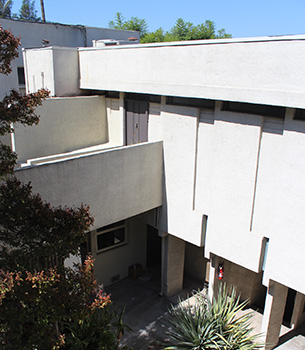
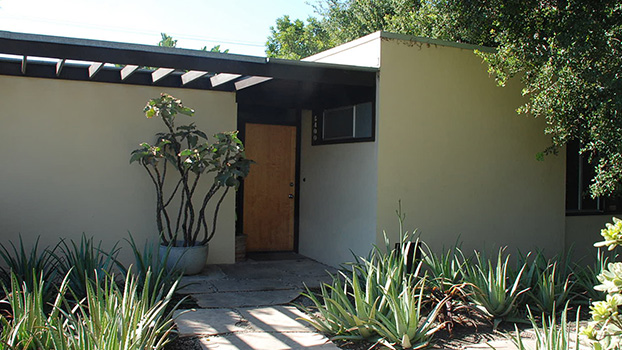
Modern Masters Recognized
This spring, Historic Resources Group successfully nominated works by two pioneers of Modern architecture in Los Angeles – Rudolph Schindler and Richard Neutra – for designation as Historic-Cultural Monuments: Schindler’s Sachs Apartments (1927-1939) in Silver Lake, and Neutra’s Samuel Miller House (1951) in Beverly Grove. Schindler designed the Sachs Apartments over a period of twelve years for artist and color consultant Herman Sachs. The complex, with its clusters of cubical masses stepping up the steeply sloping hillside lot, flat roofs, unadorned plaster wall surfaces, and large expanses of glass, is an exceptional example of Schindler’s early adaptation of International Style architecture for residential structures in Los Angeles, and exhibits many of the features that Schindler pioneered and developed throughout his career. The Samuel Miller House is an excellent example of Neutra’s post-World War II residential work, reflecting the regional variation on Modernism that characterized domestic architecture in Southern California from that period, and of which Neutra was an influential proponent. Both nominations were enthusiastically approved by unanimous vote by the City’s Cultural Heritage Commission.
Image left: Samuel Miller House, Richard Neutra, 1951.
Image right: Sachs Apartments, Rudolph Schindler, 1927-1939.